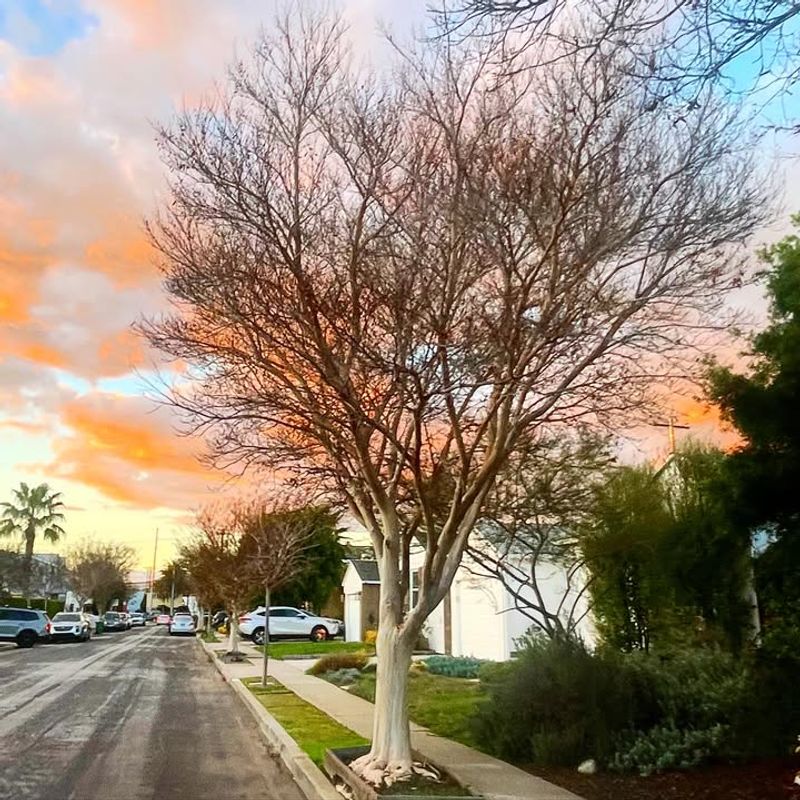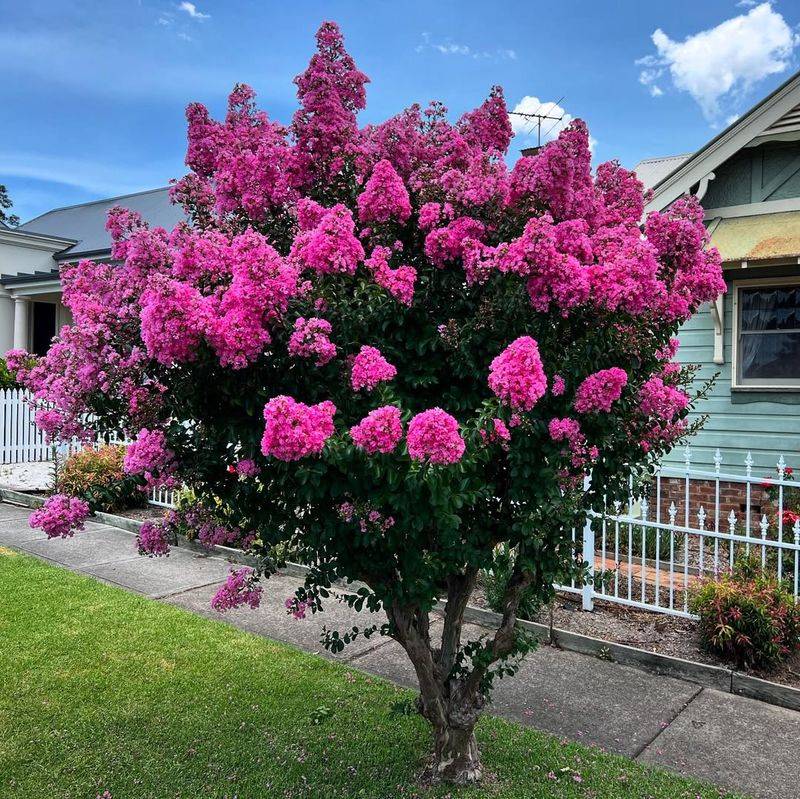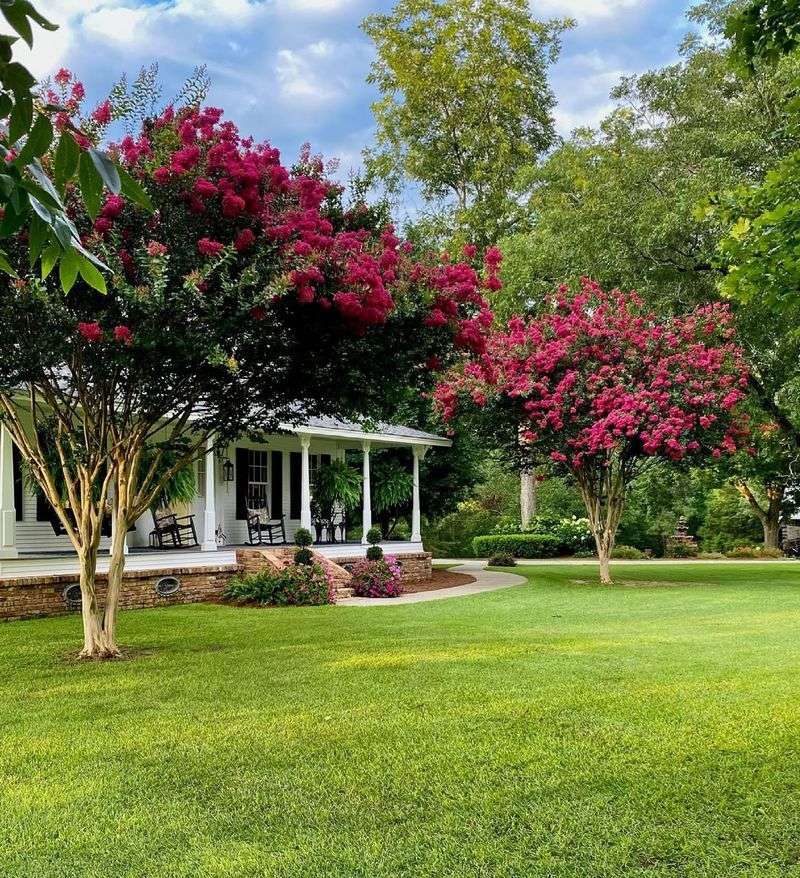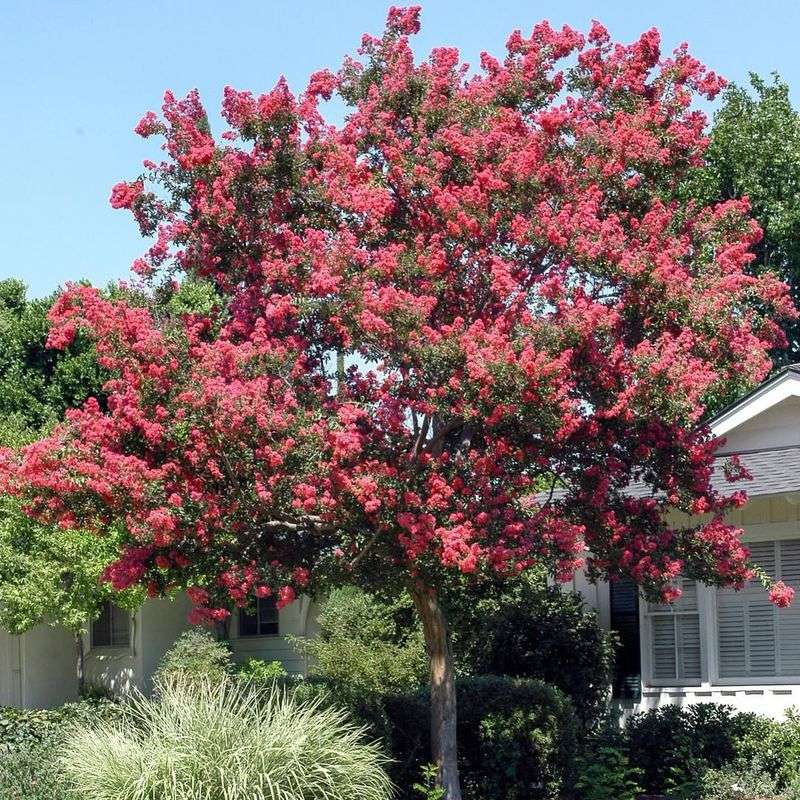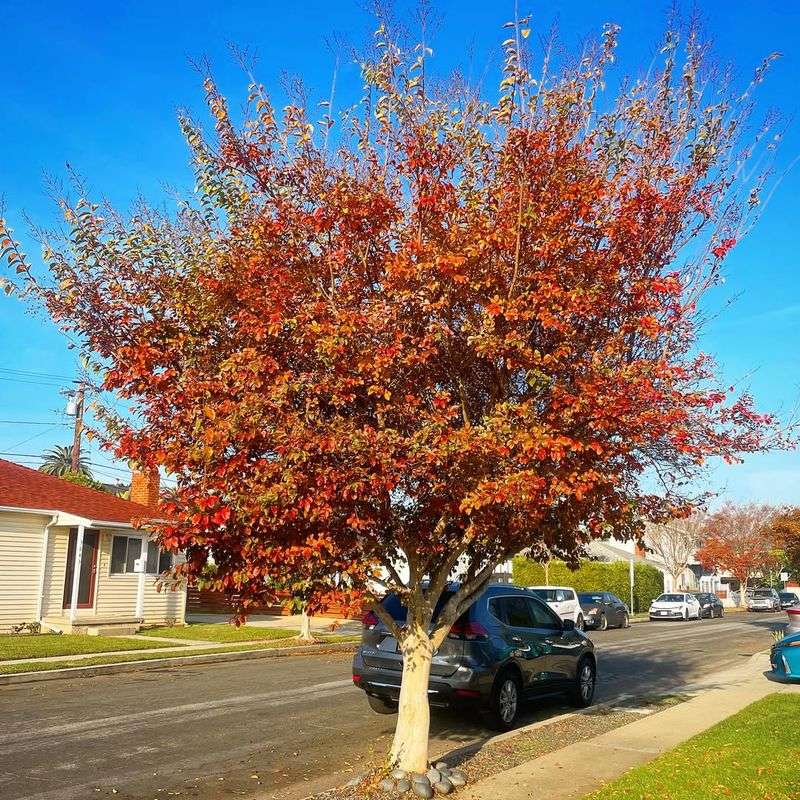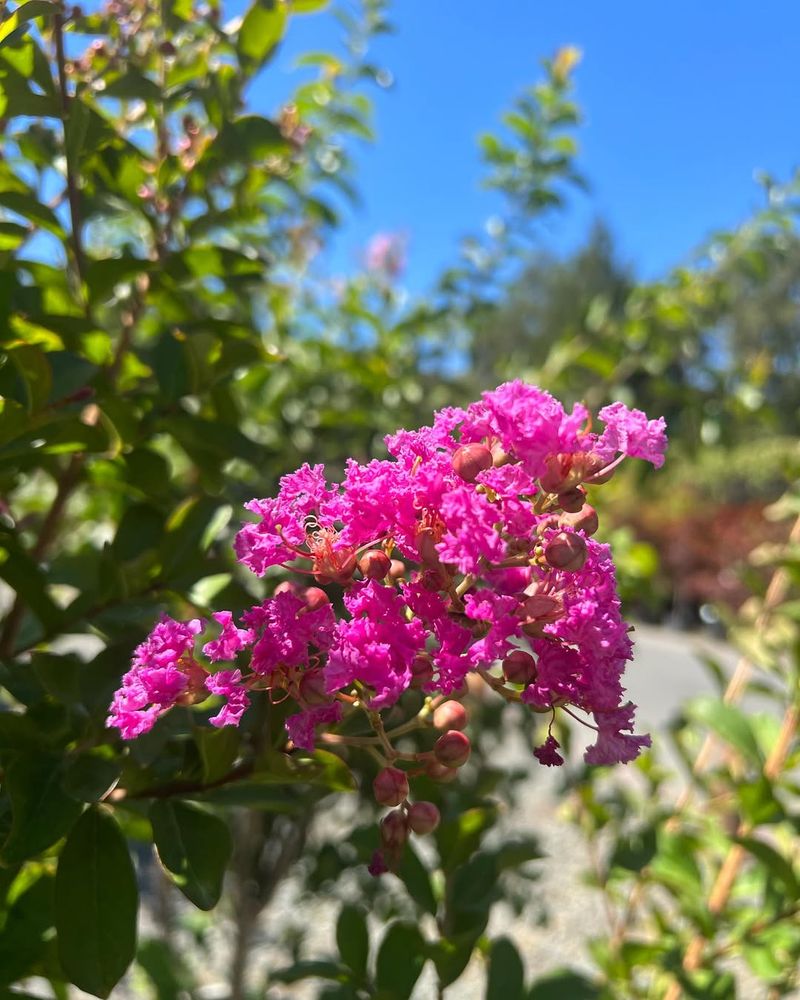A splash of pink can brighten any yard, and one hardy shrub is sweeping across Missouri gardens like a quiet favorite that suddenly takes center stage. Its blooms pop against spring greenery and hold their own through shifting weather, giving homeowners color they can count on year after year.
This tough plant asks for little but gives back in full, filling flower beds with charm and turning plain corners into eye-catching spots. For gardeners who want beauty without the fuss, this pink powerhouse called crepe myrtle is quickly becoming the talk of the neighborhood.
1. Summer Blooms That Last For Months
Crepe myrtle produces gorgeous pink flowers that can brighten your garden from June all the way through September. Unlike many plants that bloom for just a few weeks, this shrub keeps producing fresh clusters of ruffled petals throughout the warmest months.
Missouri gardeners love how the blooms attract butterflies and hummingbirds, creating a lively outdoor environment. The long flowering period means you’ll enjoy continuous color without replanting annuals every season, saving both time and money while keeping your landscape looking fresh.
2. Cold Hardy Varieties Perfect For Missouri Winters
Many gardeners worry about plants surviving Missouri’s unpredictable winter weather, but certain crepe myrtle varieties handle the cold remarkably well. Newer cultivars bred specifically for northern climates can withstand temperatures down to negative fifteen degrees Fahrenheit.
Popular cold-hardy varieties like Dynamite, Tuscarora, and Natchez have proven themselves in Missouri gardens year after year. Even if winter temperatures cause some dieback, these tough shrubs typically bounce back quickly in spring, sending up new growth from their roots.
3. Drought Tolerance Makes Watering Easy
Once established in your garden, crepe myrtle needs surprisingly little water compared to other flowering shrubs. Its deep root system allows it to find moisture even during dry spells that would stress out less adaptable plants.
During Missouri’s hot, humid summers, you won’t need to drag out the hose constantly to keep this shrub looking good. Water newly planted crepe myrtles regularly for their first growing season, then watch them thrive independently. This drought resistance makes them ideal for busy homeowners or those practicing water conservation.
4. Beautiful Bark Adds Year-Round Interest
Did you know crepe myrtle offers visual appeal even after its flowers fade and leaves drop? The shrub’s smooth, exfoliating bark peels away in thin sheets to reveal stunning patterns underneath in shades of cinnamon, gray, and cream.
This naturally decorative bark becomes especially noticeable during winter months when other plants look dormant and bare. Many gardeners specifically position crepe myrtles where they can admire the bark texture from windows or walkways, turning what could be a dull season into an opportunity for year-round garden beauty.
5. Compact Sizes Fit Smaller Yards
Not everyone in Missouri has acres of space for massive trees, which is why dwarf and semi-dwarf crepe myrtle varieties have become so popular. These smaller versions grow just three to six feet tall, making them perfect for foundation plantings, borders, or container gardens.
Varieties like Pocomoke and Chickasaw deliver all the beautiful pink blooms and attractive features of larger crepe myrtles without overwhelming your landscape. You can plant them closer to walkways, patios, or driveways without worrying about branches interfering with activities or structures.
6. Minimal Pruning Keeps Maintenance Simple
Forget the outdated practice of severe pruning that some people call crepe murder. Modern gardening experts recommend light trimming to maintain shape and minimal pruning, allowing the shrub’s natural form to shine through.
Prune your crepe myrtle in late winter or early spring before new growth begins, focusing on crossing branches or weak stems. Remove spent flower clusters during the growing season if you want to encourage additional blooms. This minimal maintenance approach respects the plant’s natural beauty while keeping it healthy and attractive.
7. Vibrant Fall Foliage Extends The Show
After months of pink blooms, crepe myrtle surprises Missouri gardeners with another spectacular display when temperatures cool. The green leaves transform into brilliant shades of orange, red, and burgundy, creating a stunning autumn focal point.
This fall color rivals that of traditional autumn favorites like maples and burning bush, giving you two distinct seasons of visual impact from a single plant. The colorful leaves eventually drop, but not before providing weeks of eye-catching beauty that transitions your garden from summer into winter with style and grace.
8. Pest Resistance Means Healthier Plants
Gardeners appreciate that crepe myrtle naturally resists many common pests that plague other ornamental shrubs. While aphids occasionally appear, they rarely cause serious damage and can be controlled with a strong spray from your garden hose.
Powdery mildew sometimes affects older varieties, but newer cultivars bred for disease resistance stay clean and healthy throughout the growing season. Choosing resistant varieties like Dynamite or Tonto means you’ll spend less time treating problems and more time enjoying your beautiful, thriving shrubs without constant intervention or expensive chemical treatments.



